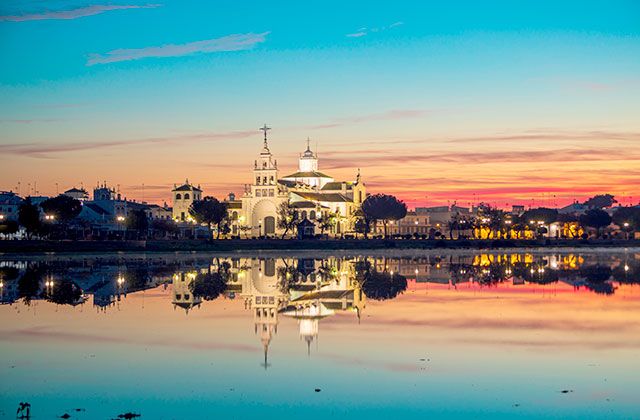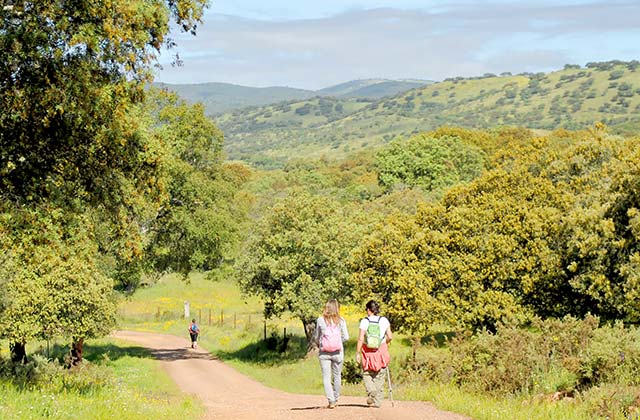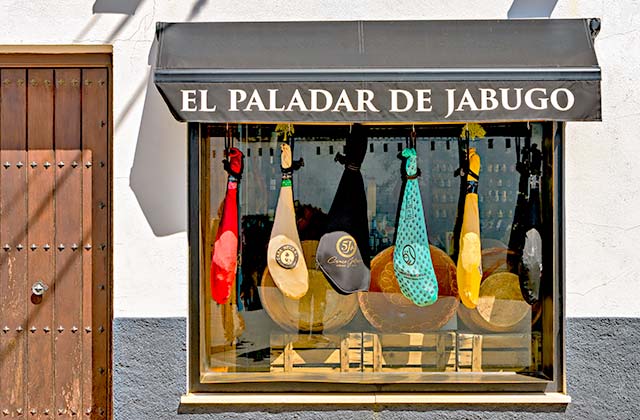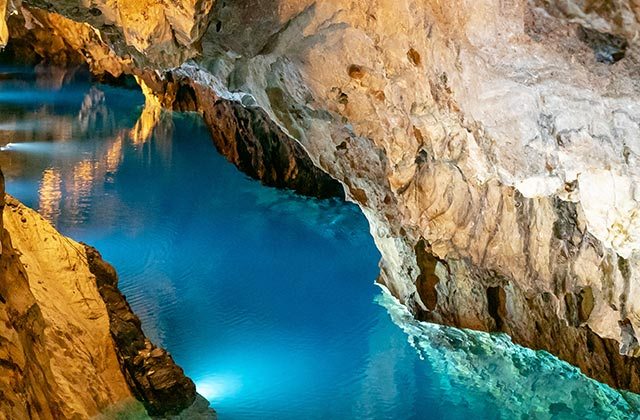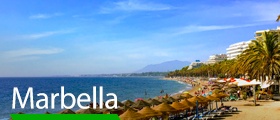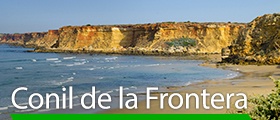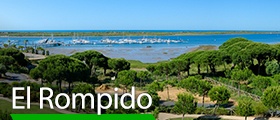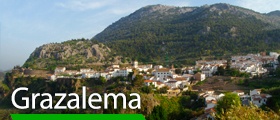
Huelva: 22 beautiful villages with a special charm
We invite you to tour Huelva villages. We show you 22 of Huelva’s pretty villages located amidst mountains, salt marshes, pastures and countryside. Places where you can see the traditional white silhouettes of Andalusian villages, surrounded by beautiful natural settings. Nature and history have given the white villages of Huelva a great many charms.
Many villages in Huelva form part of environments protected by their ecological and landscape value. Doñana National Park, Odiel Salt Marshes Natural Site and Sierra de Aracena and Picos de Aroche Natural Park are located on land in Huelva province. The famous River Tinto is also in Huelva and has a special physiognomy that many call martian.
Different cultures have left the villages of Huelva with a beautiful and interesting historical and cultural heritage. Castles such as Cortegana, Niebla and Sanlúcar de Guadiana. Old churches such as Santiago Apóstol in Bollullos Par del Condado and El Salvador in Cortegana. The rural mosque in the town of Almonaster la Real. Carabelas Wharf in Palos de la Frontera.
The villages of Huelva boast an almost perfect combination of mountains and sea, nature and man. Enclaves of tourist interest due to the value of their environment, architecture, culture, customs and gastronomy.
Let’s start our tour of 22 of Huelva’s pretty villages.
Huelva villages
Ayamonte
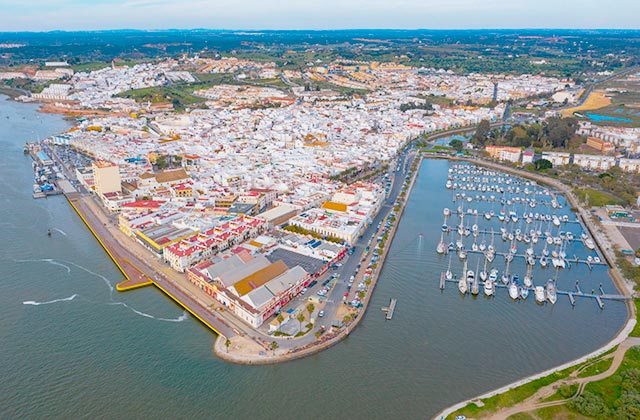
Ayamonte, Huelva
Open the invisible doors to Portugal to Huelva from the western corner of the province, overlooking the Guadiana estuary, sheltered by marshes and streams. Land of fishermen and renowned artists who have taken the name of Ayamonte beyond its borders, as it happened with sculptor Antonio Leon Ortega, who developed his own style in the imagery during Easter in Andalusia and Extremadura. With a monumental historical centre that starts in the Plaza de la Laguna and an endless coast between Punta del Moral and Isla Canela.
Minas de Riotinto
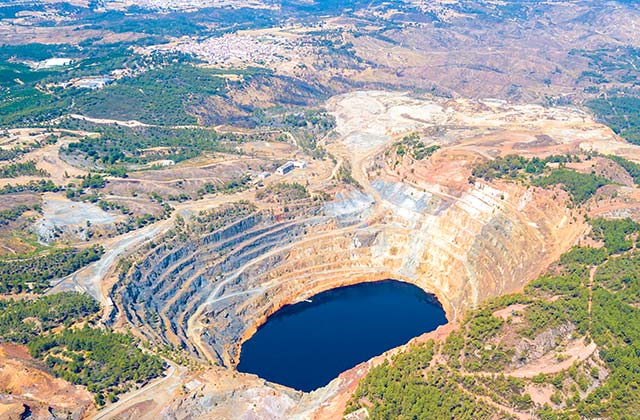
Minas de Riotinto
Over the centuries, mining activity has carved people, its culture and geography. Nowhere more than in Minas de Rio Tinto and its region can be considered an almost lunar landscape, a river of red water (Tinto) and the largest opencast mine across Europe, the Corta Atalaya. The mining heritage has ultimately become a tourist attraction, with guided tours, a museum and a train which runs through the history of the region. Between September and October, the traditional sheep shearing season takes place (taking its name from a bell), with songs in honour of the Virgen del Rosario.
Cadiz and Huelva white villages
Almonaster La Real
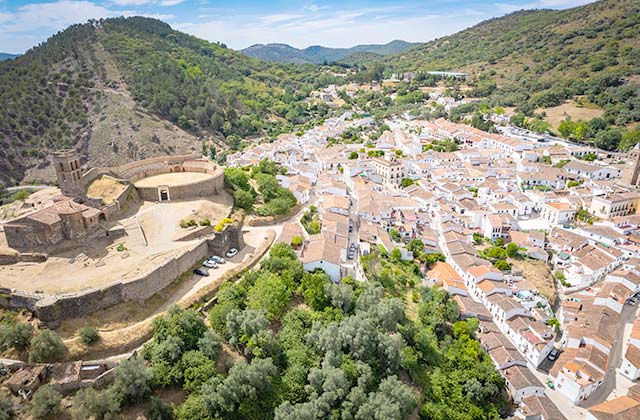
Almonaster La Real
Almonaster La Real is an ancient town with a vast architectural heritage, the result of its long history. The wall and the castle date from the Arab period, which inside still keeps one of the few rural Islamic mosques that exist in Spain, as well as a chapel and a bullring.
Other places to visit are the San Martin Parish Church (Gothic-Moorish style) and the Hermitage of Santa Eulalia (located 20 Km from the city and declared a National Monument). Just outside the town is the Cerro de San Cristobal, where you can visit the highest vineyards in the area (917 meters) with which Bienteveo wine is made.
One of the main hallmarks of the town is its ethnological heritage, represented in its full calendar of festivals, its folklore and musical expressions, among which we find the fandango of Almonaster.
Alájar

Alajar, Huelva
From Arab times, the old town of Alajar is a small village with quiet, narrow cobbled streets, which has preserved its popular houses with whitewashed walls and red roofs (sixteenth to eighteenth centuries). The most remarkable monument is the Church of San Marcos, of large and baroque style.
The village is built at the foot of the Peña de Arias Montano, a natural monument of great natural and historical value. It was a place of retreat and meditation for Benito Arias Montano, a theologian erudite and adviser of King Philip II, and one of the most influential intellectuals of his time. Located 700 meters above sea level, the Rock of Alájar is the balcony of the Sierra. On it we find the Nuestra Señora de los Angeles Shrine, an important Marian pilgrimage in Andalusia.
Palos de la Frontera

Palos de la Frontera, Huelva
A mainly agricultural land where the brave men that accompanied Christopher Colombus were born, with the La Rábida Monastery as an icon of adventure. From the other side of Tinto in which the monument to the Admiral welcomes Huelva, the Muelle de las Carabelas speaks of history and the connections are the area to Colombus. Palos is famous for the high quality of its strawberries, present in the domestic and European markets, and its heritage culture, starting with the Fontanilla and the Church of San Jorge, setting for the presentation of the ships to Colombus.
El Rocío – Almonte

El Rocio Huelva
This small village in the municipality of Almonte becomes the centre of one of the largest pilgrimages in the world once a year. Devotees from around the world flock by thousands to El Rocío during the days before Whit Monday. During the rest of the year, the town welcomes all visitors who want to experience this beautiful and unique enclave in the marshes of Doñana and the centre of a passion that transcends religious and becomes, year after year, a real social event.
Aracena
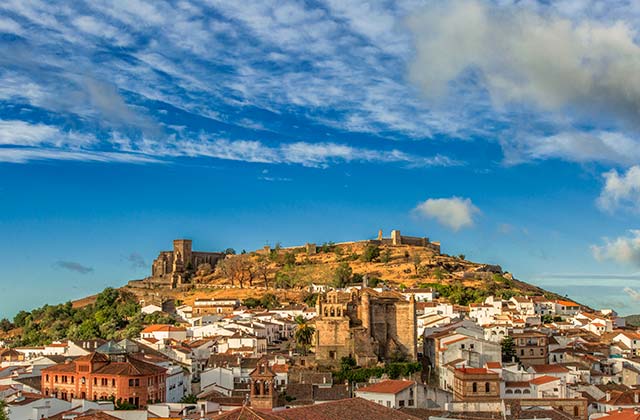
Aracena, Huelva
Aracena (the capital of the region) has a historic centre full of monuments that lies at the foot of its former Almohad Castle and Priory Church of Nuestra Señora del Mayor Dolor.
Under the castle hill, we find the Cave of Wonders, one of the most interesting karst complexes in Spain, full of stalactites, stalagmites, eccentric cast and hides.
Other sites to visit in Aracena include: Museo del Jamón, Asunción Church, Fuente del Concejo, Casino Arias Montano and the Interpretation Centre of Natural Sierra de Aracena and Picos de Aroche Park.
You can also visit the Quesería Monte Robledo and sign up for their cheese workshop, where you will learn to prepare a goat cheese with your own hands.
El Rompido

El Rompido, Huelva
El Rompido is located in the natural setting of La Flecha. Here we find one of the most precious morphological jewels of Spain, Nueva Umbria beach, a strip of fine golden sand located between the Atlantic and the Piedras River. A wonderful place for those who enjoy wild and quiet beaches even during the month of August.
Besides tranquillity, El Rompido offers plenty of trails for hiking or biking among dunes and pine trees along natural parks such as Doñana, Isla Cristina or Odiel Marshes. Another place to visit is El Rocio, in Almonte, home to Spain’s most famous pilgrimage, or Route of the Columbian Places.
25 things to see and do to have a dream holiday in El Rompido
Fuenteheridos
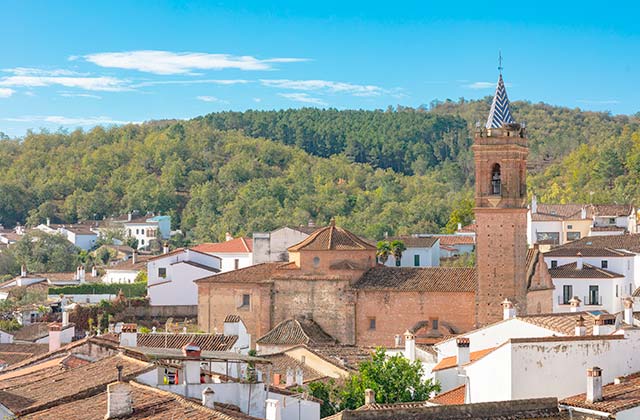
Fuenteheridos, Huelva
If anything characterizes the Natural Park of the Sierra de Aracena and Picos de Aroche is its exuberant nature and the extraordinary beauty of the landscape. Fuenteheridos is located in a privileged environment, surrounded by thick forests of chestnut trees, cork oaks and ancient oaks. All seasoned by the colour and joy that brings the abundant water that irrigates the valley.
On Plaza del Coso is the Fountain of the Twelve Caños, which daily supplies 2 million liters of water, also the birthplace of Múrtiga river. In this square -very important for social activities- is also the building of the Vieja Posada and Cruz de Mármol (made in 1792 with materials from quarries from the vicinity).
The historic centre of Fuenteheridos consists of narrow streets paved with limestone, and popular houses. Do not miss the Botanical Garden of Villa Onuba, the Parish Church Espíritu Santo (neoclassical), and the Humilladero of Veronica (one of the few remaining in Andalusia, dating from the eighteenth century, on the way to the cemetery).
On the road between Alájar with Fuenteheridos (HU-8121), have a look at the Port of Alájar, an exceptional viewpoint (837 meters) from which you can see the whole Sierra to Huelva capital with the coastline in the background.
Moguer
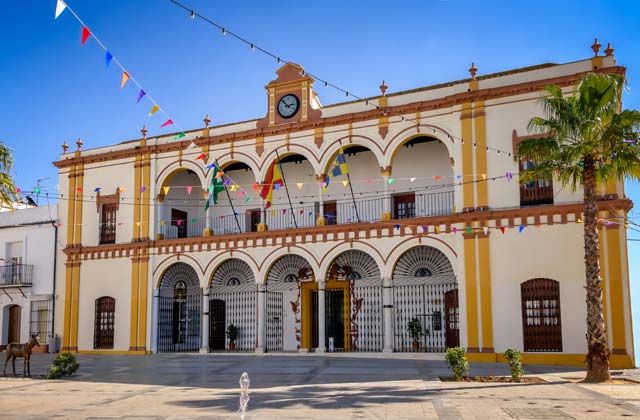
Moguer, Huelva
Within Donana National Park, the cradle of poetry, in which the Nobel Prize for Literature Juan Ramón Jiménez was born, we also find stop places related to the life and work of the poet, including a Museum or the Fuentepiña residence. Strawberry production is also shared with the neighbouring Palos, with thousands of hectares devoted to cultivation. Here we also have the famous cakes “La Victoria”, vermouth and orange wine. During the summer we have the Fair of Mazagon Beach.
Jabugo

Jabugo, Huelva
Mountain town in Huelva famous for its exquisite Iberian ham. Iberian pata negra ham is the insignia of Jabugo. It is the star product and one of the town’s main sources of wealth.
Visit the Centre of Innovation and Promotion of Iberian Ham. It is located at the town’s exit, in the direction of Badajoz. It occupies one of Jabugo’s emblematic buildings: Tiro Pichón. A stone and brick construction attributed to the prestigious architect Aníbal González, the Seville born chief architect of the 1929 Seville Expo.
Rural tourism is another of its sources of wealth. Jabugo is located in the very heart of Sierra de Aracena and Picos de Aroche Natural Park.
We recommend also visiting its old hamlets:
- El Quejido is located around 1.8 miles in the direction of Huelva. It is very interesting from a landscape point of view.
- El Romero is “the blooming valley of rosemary,” according to the words of the famous Álvarez Quintero brothers.
- El Repilado is where most of Jabugo’s meat industries are established, which is why it was known as “little Catalonia” in the early 20th century.
Cortegana
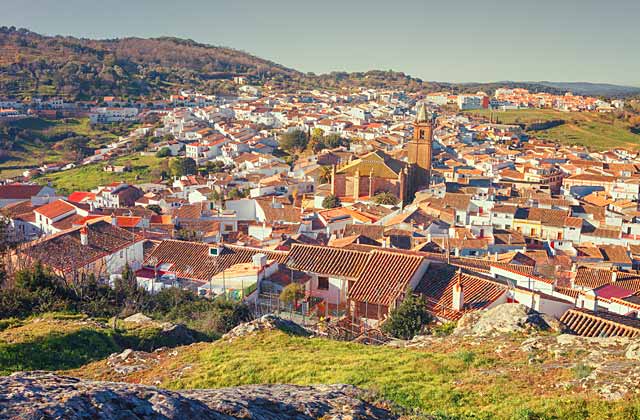
Cortegana, Huelva
Beautiful village in the Huelva mountains. An old Medieval castle presides over its urban centre. It was built in Sancho IV’s times and is very well preserved. Its interior is home to a museum of archaeological pieces, arts and crafts and furniture from the era. Cortegana Castle hosts the Medieval Lectures that take place each year in early August.
As you walk through its streets, you will also be amazed by its religious buildings that have huge historical and artistic interest, such as:
- The 16th century, Gothic Mudejar style Church of the Saviour.
- The 14th and 15th century Hermitage of Our Lady of Mercy.
- The Gothic Renaissance style Church of Saint Sebastian.
Its natural setting is also very attractive. The municipality of Cortegana forms part of Sierra de Aracena and Picos de Aroche Natural Park.
Sanlúcar de Guadiana
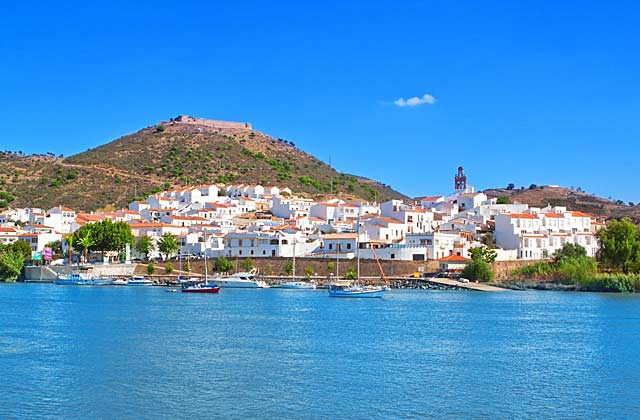
Sanlúcar de Guadiana, Huelva
Sanlúcar de Guadiana is a beautiful village in Huelva located on the border with Portugal, on the left of the River Guadiana. The best place to enjoy an extensive, beautiful panoramic view of Sanlúcar de Guadiana is San Marcos Castle. It is on a hill and from here you can also make out the old windmills that are still preserved in the municipality.
Other points of interest of this village of Huelva include:
- The Parish of Our Lady of the Flowers.
- Its port marina, which hosts the International Sailing and Kayaking Regatta.
- The San Silvestre Pasture.
- The Rivera Grande de los Álamos, also known as Las Golondrinas.
From Sanlúcar de Guadiana, you can also see Alcoutím, a charming small town in Portugal located on the other side of the river.
Niebla
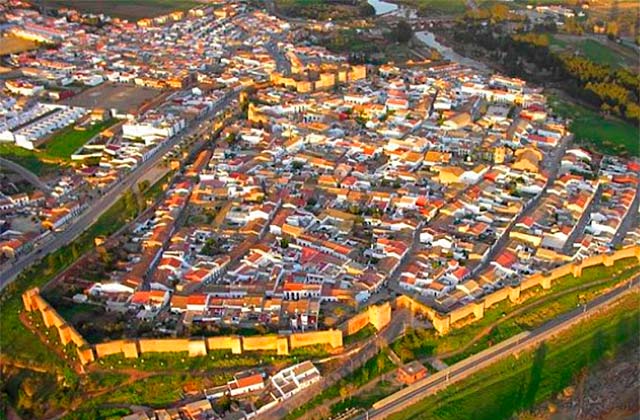
Niebla, Huelva
This beautiful walled village of Huelva was declared a historical-artistic monuments complex in 1982. Its old reddish walls, with Guzmanes Castle, are two of the village’s points of most tourist interest.
The walls cover 1.2 miles and have up to 40 turrets and five main doors.
Other buildings also stand out for their beauty, including:
- The San Martín Chapel
- The Church of Saint Mary of Granada, which was an old mosque.
- The Roman bridge over the River Tinto.
- The museum room of the old Hospital of Our Lady of the Angels. A 16th century building that now houses Niebla House of Culture.
Bollullos Par del Condado

Bollullos Par del Condado, Huelva
A village of Huelva where wine plays a leading role. An ideal place to gaze at vineyards and visit numerous wine cellars. You will also enjoy seeing its different buildings of historical artistic interest, such as:
- Casa Vallejo. A beautiful palatial house located in the old town. It has interesting architectural elements of different eras and styles.
- Town Hall. 18th century building with a Neo-Mudejar style façade.
- Church of St. James the Apostle. Declared a Site of Cultural Interest and National Historical Artistic Monument. A Mudejar and Baroque style temple.
Isla Cristina
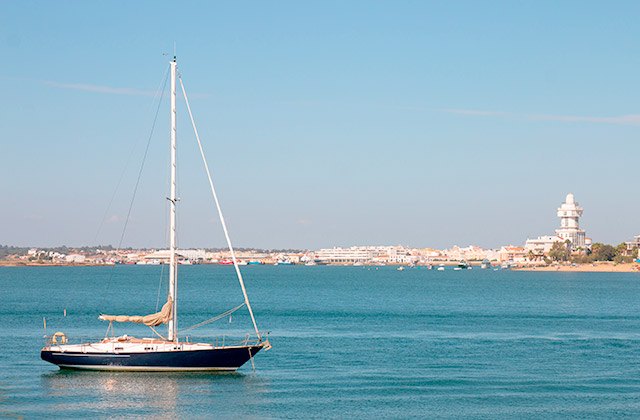
Isla Cristina, Huelva
Isla Cristina is a wonderful locality which has been able to weave its fishing tradition into the promotion of a tourist destination, which must be the envy other more famous villages on the Huelva Costa de la Luz. This small municipality near the border with Portugal is home to some treasures which make it a highly recommended place to visit whatever the time of year, although both spring and summer are of course the most recommended seasons.
At Isla Cristina we find the most important fishing port in all Andalusia, where you will you be able to see how salted and tinned fish is prepared, since it is home to the great tradition of these types of preparations. We recommend you also enjoy all its natural charm by visiting its gorgeous tidelands formed by beaches, pine forests and dunes.
Zufre
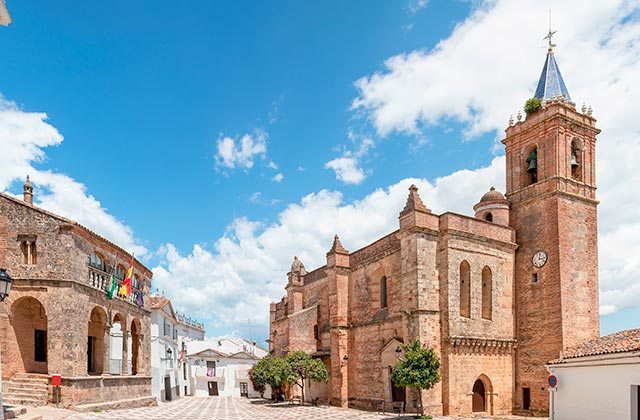
Zufre, Huelva
This municipality with so much tradition is located in the heart of the High Sierra of Aracena y Picos de Aroche, right on the edge of a hillside. When you arrive at Zufre you will feel that the village is suspended on the mountain, so you will think that this town is a big balcony with amazing views of both the mountains and the Zufre reservoir. Here you can enjoy a charming natural setting and a great historic heritage. Indeed, this village with its streets of Islamic tradition was in 2002 declared a Historic-Artistic Complex, so it is not surprising that we have included it here as one of the most beautiful Huelva villages.
Linares de la Sierra
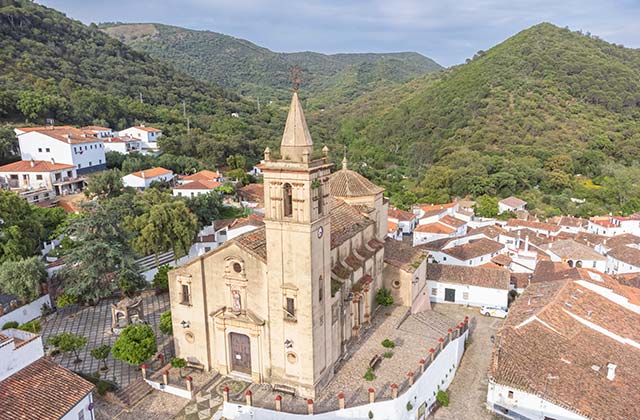
Linares de la Sierra
Linares de la Sierra is located in the heart of the Sierra de Aracena y Picos de Aroche Natural Park, one of the most important natural protected environments in all Andalusia. In addition, it has an amazing urban layout, which is why in 2005 it was declared a Historic-Artistic Complex. Linares de la Sierra is not a large municipality, but you will certainly be amazed by its beauty and great monument heritage. If you decide to visit this village, you must stop by the San Juan Bautista Parish Church, a mighty church for such a small village. Though the most recommendable thing you can do in this municipality is to take your time and enjoy a relaxing stroll through its impressive streets, while you delight in its classical architecture.
Aroche
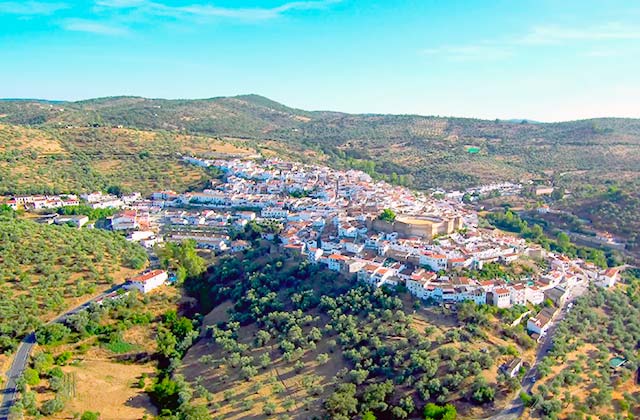
Aroche, Huelva
If there is one thing we are sure of, it is that Aroche is one of the most important Huelva villages, essentially due to its location in the western part of Sierra de Aracena y los Picos de Aroche National Park, one of the most important protected spaces in Andalusia. In addition to its exceptional natural setting, its old town is worth mentioning, since it has been declared a Cultural Heritage Site. In Aroche you must visit the Parish Church with its characteristic tower, its fabulous Castle with its Almoravid walls which house the bull ring. Another point of great interest and which you must not miss the chance to visit are the Roman aqueduct, the San Pedro de la Zarza Hermitage and the Dolmen de la Belleza.
Hinojos
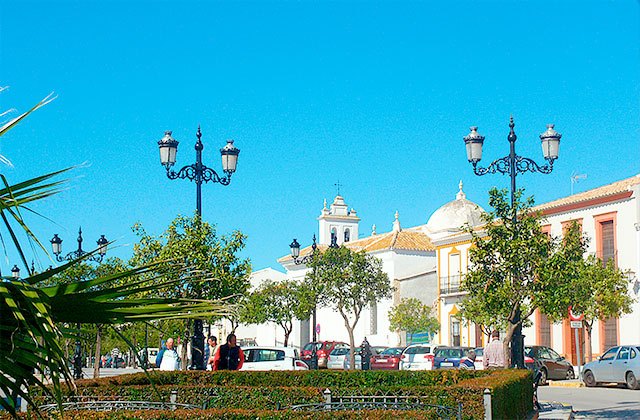
Hinojos, Huelva
Hinojos is a municipality with great charm. What stands out is its great heritage and environmental wealth, essentially due to the tidelands where you can find a large number of birds. In Hinojos, as in other Andalusian municipalities, the festivals and traditions are hugely important, an example of which is the Fair and, of course, Holy Week. As far as heritage is concerned, at this village you can enjoy spaces such as the Soledad Hermitage, the Santiago el Mayor Parish Church, the Town Hall and the Large House. And this is just a small part of what Hinojos has to offer.
Los Marines
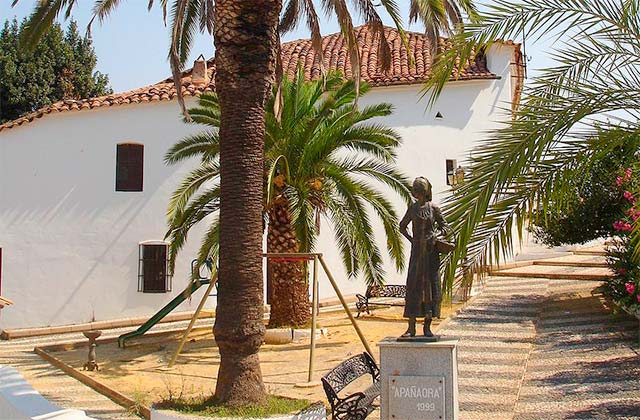
Los Marines, Huelva
Los Marines is a municipality nestled in an amazing landscape of chestnut and oak forests, small hills and streams. This charming municipality has a wonderful historic heritage, so it is no surprise that in 2002 it was declared a Historic-Artistic Complex. The most artistically and architecturally important monument in Los Marines is without a doubt Nuestra Señora de Gracia Parish Church, which also stands out for its prominent tower, which emerges amidst the tiled roofs of the houses which form this municipality.
Punta Umbria
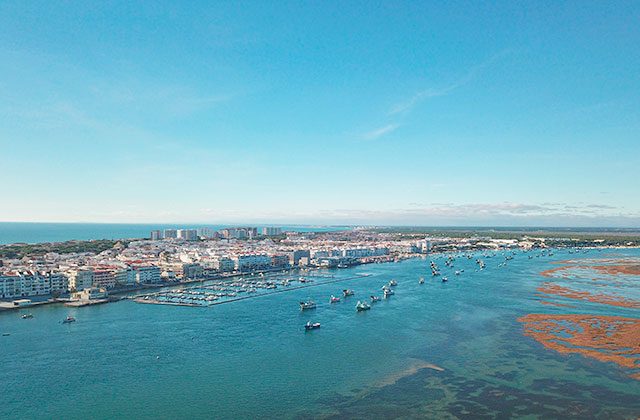
Punta Umbria, Huelva
Punta Umbría is a strip of land which enters the Atlantic and the Huelva Estuary, offering visitors and locals extensive and wide white sandy beaches. In this municipality it is obligatory to enjoy the La Bota, El Portil, Matanegra and Los Enebrales beaches.
This municipality was populated in ancient times first by Phoenicians and then by Greeks and Romans. The most striking aspect of this is located in “El Eucaliptal” which is home to interesting Roman archaeological remains from the 5th and 2nd centuries BC. However, the locality as it is today dates from the 19th century, when the English who arrived at the coasts of Huelva brought by to the Río Tinto mining company chose it as a hot springs for the quality of its beach and location near the capital. Today you can visit both the House Museum of the English and the Almenara Tower, a defence bastion located at the start of the estuary and next to the fishing village.
One of the biggest attractions are its ideal conditions to practice water sports, such as sailing or surfing.
Tips and Suggestions for Visiting the White Villages of Huelva
Visiting the white villages of Huelva is a charming experience that allows you to discover the historical, cultural, and natural richness of this region. Below are some tips and suggestions to help you make the most of your visit:
1. Plan Your Route
The white villages of Huelva are numerous, but some of the most recommended include Aracena, Almonaster la Real, Castaño del Robledo, and Jabugo. Each one has its unique charm, from historical monuments like the Castle of Aracena and the Mosque of Almonaster la Real to the natural landscapes of the Sierra de Aracena.
2. Best Time to Visit
Spring and autumn are the best times to visit, as the weather is mild and you can enjoy the lush green landscapes. In summer, temperatures can be higher, so if you choose to travel during this season, it’s better to engage in activities early in the morning or at sunset to avoid the intense heat.
3. What to Bring
- Comfortable clothing and footwear: Many of these villages have cobbled streets and some natural routes that are perfect for walking.
- Water and sunscreen: Especially if you plan to hike.
- Camera or mobile phone for photos: The landscapes and architecture of the villages are ideal for capturing memories.
4. Local Gastronomy
You can’t leave without trying the famous Iberian ham from Jabugo, one of the region’s star products. Additionally, I recommend trying traditional game stews, mushrooms (especially in season), and local desserts like tortas de chicharrones. In each village, you’ll find family-run restaurants where the freshness and quality of local products are guaranteed.
5. Hiking Trails
The villages of the Sierra de Aracena are connected by well-marked trails, such as the Ruta del Agua (Water Route) or the Camino de los Molinos (Mill Path). These routes will take you through valleys, chestnut forests, and dehesas, perfect for a getaway in the heart of nature.
6. Monuments and Points of Interest
- Gruta de las Maravillas (Aracena): A spectacular cave with stalactite and stalagmite formations.
- Mosque of Almonaster la Real: A monument reflecting the Arab history of the region.
- Castles and fortifications: Many villages have castles or defensive towers, like those in Aracena or Cumbres Mayores.
7. Local Events
Check the calendar for local festivals and fairs, such as the Romería de la Reina de los Ángeles in Alájar or the Fiesta del Jamón in Jabugo. These celebrations will allow you to learn more about local traditions and culture.
8. Rural Accommodation
If you want a more authentic experience, consider staying in a rural house or a small hotel instead of opting for large chains. Many of these accommodations offer incredible views and personalized attention. Booking in advance is advisable, especially on weekends and during high seasons.
9. Getting Around
It is recommended to rent a car to visit the different villages, as public transportation may be limited in some rural areas. Make sure to carry a map or use a GPS, as some rural roads can be winding and narrow.
10. Respect the Environment
These villages and their surroundings are part of natural parks and protected areas, so it’s important to follow conservation rules. Don’t leave trash behind, and follow the guidelines on the hiking trails.
The charm of the Malaga interior: the prettiest towns in the province
Villages in Cadiz with a special charm
Cadiz and Huelva white villages
Where to stay
We recommend that you stay at the Hotel Fuerte El Rompido, located on a spectacular location that dominates the natural landscape of Rio Piedras. To this we must add an aesthetic Andalusian architecture that harmonizes with its surroundings. Here you can enjoy a pristine 14 kilometre beach with Sierra de Huelva nearby, where you can take all those outdoor trails to help you get into shape naturally.
